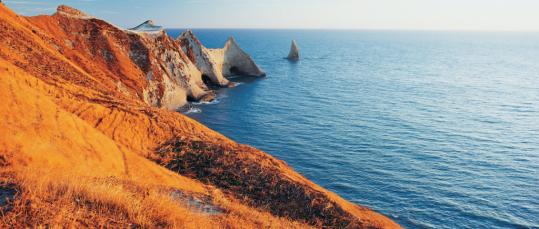Napier is an important port city in Hawke's Bay, New Zealand. Ten kilometres further south lies the slightly smaller town of Hastings. The two are often regarded as twin cities. The city is 332 kilometres by road (about four hours) from the capital, Wellington. It is the only city in the Hawke's Bay region, which is the largest crossbred wool centre in the Southern Hemisphere and one of the largest apple, pear and stone fruit producing areas in New Zealand. Napier has also become an important grape growing and wine production area. There are large frozen meat, wool, pulp and timber tonnages passing through Napier’s port. Napier is a popular retirement city and tourist resort, and has one of the most photographed tourist attractions in the country, a statue on Marine Parade called Pania Of The Reef. Her statue is regarded in Napier in much the same way that the Little Mermaid statue is regarded in Copenhagen, and bears some similarities to its Scandinavian equivalent. The city is located on a headland (Bluff Hill) and surrounding plain at the southeastern edge of Hawke Bay, a large semi-circular bay which dominates the east coast of New Zealand's North Island. The coastline of the city was substantially altered by a large earthquake in 1931. Apart from Hastings, several other, smaller towns lie close to the city, some of which (such as Taradale) are now little more than large suburbs. Other surrounding towns include Bay View, to the north, Clive, to the south, and Flaxmere, west of Hastings. The city enjoys some of the highest sunshine hours in New Zealand, its warm, relatively dry climate the result of its location on the east coast. Most of New Zealand's weather patters cross the country from the west, and the city lies in the rain shadow of the Volcanic Plateau and surrounding ranges such as the Kaweka Range. The city is, however, prone to the remnants of tropical cyclones from the central Pacific Ocean, which occasionally are still at storm strength by the time they have travelled this far south




